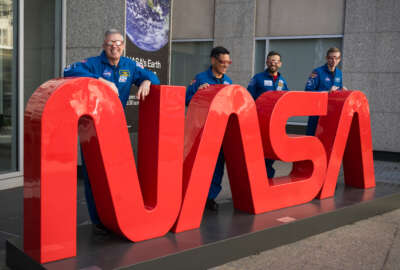Observatories still play a major role in deep space exploration
I recently got to speak with Dr. John Mulcahaey, who is director and chair of the Carnegie Observatories.
Though they are still grounded on earth, the observatories that stay looking at the sky are vital to exploring space and finding every nook and cranny in the universe. One of them, Carnegie Observatories, does just that from its world famous Las Campanas Observatory in Chile. I recently got to speak with Dr. John Mulcahaey, director and chair of the observatories, on the Space Hour, about the work they all do.
Interview transcript:
Eric White So, you’re the director of this observatory. So, what interests you and how does that bleed into the kinds of projects that you undertake at the observatory?
John Mulcahey The Carnegie Observatories was founded back in 1904 by an astronomer named George Ellery Hale, very famous guy at the time. He convinced Andrew Carnegie to fund telescopes here in Southern California, and this led to the building of the Mount Wilson Observatory, which is probably the most important observatory ever built. It was the Mount Wilson telescopes that were used by Edwin Hubble, one of our more famous astronomers, to effectively discover the universe, basically 100 years ago, 1924. And then Hubble went on five years later to show the universe was expanding. And so that was kind of our great big start. Pretty much all of modern astronomy happened at those telescopes at Mount Wilson and here at Carnegie, the first half of the last century. And then as Los Angeles grew, light pollution became a problem for us. We can no longer do the deep sky observing we need to do. And so we purchased a huge chunk of land in Chile, in the Atacama Desert, and built a whole bunch of telescopes there. And so that’s where we do our work now, this is called the Las Campanas Observatory, and we have major facilities there. And with those facilities, we do all modern astronomy, dark matter, dark energy, exoplanets, anything you can think of, early universe. We do pretty much everything. Sure. So my background is in studying the evolution of the universe, particularly how galaxies like the Milky Way have changed in time. This is a very big and exciting field at the moment, because of the James Webb Space Telescope, where James Webb is allowing us to probe kind of the most distant parts of the universe, so we can see objects way in the past and see how they’ve changed over time. And so that’s kind of been, my career has been in that area, which, right now, as I said, it’s an exceptionally exciting time. We’re seeing, you know, basically, almost the formation of the first galaxies with James Webb, and so that’s a remarkable thing I didn’t think I’d ever see in my lifetime, and we’re watching that happen. And so as the director of the observatories, I oversee the whole thing, though, all the telescopes and all the broad range of science. So, I get to hear about, you know, searches for life around other planets, and, you know, the latest ideas about dark matter. So, it’s kind of an exciting role. I get to kind of oversee, kind of all the exciting astronomy going on.
Eric White Yeah, as, you know, a non-governmental observatory, you know, people, you’re often kind of forgotten about there. And what is the role that the observatories, like yours, play in, you know, the exploration and, you know, that factor into other areas as well, when it comes to space travel and space exploration?
John Mulcahey Yeah, I think that’s a really interesting point. You’re right, that the vast majority of astronomers and people studying the universe are either universities or attached to NASA or a NASA facility for the most part. And of course, they have very different missions. NASA, of course, the missions are, they do do some astronomy, obviously, things like the Hubble Space Telescope and the James Webb Space Telescope. But, you know, NASA’s mission really is largely about space exploration. And University’s primary role, of course, is to teach the next generation of individuals, so, but here at Carnegie, we are a pure research institution with our own telescopes and our own funding, which makes it really quite unique. And so in fact, we’re a place where we can do projects that maybe couldn’t happen anywhere else, because our mission is just to do new and exciting things. And so in fact, even Edwin Hubble’s, going back to Edwin Hubble’s results from the 1920s, they were really possible because he had access to the biggest telescope in the world, and all the time in the world to work on it. He wasn’t teaching students. He wasn’t, you know, working on missions like they people do at NASA these days. So, it’s a really great job to be at a place like Carnegie. It’s complete scientific freedom, and that leads to kind of discoveries that couldn’t be made, I think, in other places.
Eric White Yeah, I need to twist your arm a little bit more and see what kinds of projects that may be a little more recent than the Hubble telescope do you think may not have happened in today’s environment where it’s all about, like you said, justifying that budget and justifying the cost?
John Mulcahey Yeah, so, no, I think that’s a great question. I would say that, well, here, so for instance, our previous director, Wendy Friedman, a very well known astronomer who’s been studying kind of the expansion rate of the universe, the so-called Hubble constant, you know. And you know, for here, she was able, over three decades, to continuously get telescope time. That’s another thing you get, like, access to telescopes for very long periods of time, which is very challenging, you know. If you’re at University, for the most part, have to use the federal observatories. It’s very hard to get a lot of time on those. So, you can do small projects, but doing big, long term projects, like measuring the expansion rate of the universe, which Wendy did, really the first accurate age of the universe estimates came from that work, was really only possible because of her ability to work on the same project for a very long time. And similarly, we have people here like Paul Butler, is another one of our very well-known astronomers. Paul has been studying exoplanets with the same telescope set up for, like, 25 years now. And if you want to, for instance, find planets that orbit their stars, say, like Jupiter or Saturn, very far from the planet, you need to observe these things for decades to actually find these planets. And so Paul has a large program doing that, which is really nobody else in the world really can do because they just don’t have the time, the long time scale to do it, and the access to the facilities.
Eric White Do you all still do work with, I mean, you can’t not work in the space realm and not do work with NASA, right? I imagine that you do collaborate on quite a few projects those, though, with those universities and agencies and even maybe some companies.
John Mulcahey No, absolutely, we do all that. So, in fact, another advantage of having your own telescopes is that you can, of course, supplement the data you get from, instance, from James Weber Hubble, so or in my case, I spent a lot of time working on the Chandra X. I spent a lot of my career doing X-ray astronomy. And so using the Chandra X-ray space telescope, and with Chandra, you know, sometimes you need, you need the you need to study the properties of the galaxies as well as the X-ray properties. So, you need the visible telescopes on the ground. And so, in fact, we do a lot of that. It’s a there’s, they’re synergistic, of course, and so having access to the telescopes really helps you. In fact, I think it gives us an advantage when we’re trying to get time on, for instance, James Webb, because we can provide all the supplementary data quite easily. So, we do all of that. A good astronomer these days works across wavelengths and across boundaries. There are, there were no boundaries. You know, historically, an X-ray astronomer was somebody who only studied X-rays of the universe, and then you had infrared astronomers, only did that. These days, I think you know, most of us work across all those different types of light and using space and ground based facilities.
Eric White We’ve gone through the past and gone through the present. Let’s talk about the future. Where do you, you know, see, do you see observatories like yours staying strong? You guys are over, you know, well over 100 years old now. What do you see as the future? And what role do you, how do you see your role evolving, you know, space exploration becomes more commercial than, rather than, you know, just a side project for a lot of people?
John Mulcahey Right. And, no, that’s, I think, exciting. I mean, I think there’s still more work to be done with ground based telescopes. We are building, the next generation telescopes are being built here at Carnegie. We’re part of the Giant Magellan Telescope, which is a telescope that will be at our facility in Chile, coming online around 2030, we hope. And that’s a, it has seven mirrors, each 25 feet across. The seven mirrors work together. So it’s kind of the equivalent of an 800-foot telescope, the mirror, that is. I mean, it’s a huge telescope, to put that in perspective, the James Webb is smaller than one of the seven mirrors. So, these very large telescopes, there’s another one being built by Europe, and then our colleagues at Caltech and UC are leading an effort to try to build one in Mauna Kea, Hawaii. These three giant telescopes are going to allow us to study things that would never been possible before. You know, I think the one real exciting thing is studying the composition of atmospheres around other planets, exoplanets, looking for evidence of life. I think there’s a good chance these planets will, these telescopes will be the ones that really give us the first evidence of life in the universe. That’s very exciting. So, these big telescopes on the ground are being built, and they’ll come online in the next decade or so. Space, of course, is really interesting. It’s very expensive and takes a very long time. And so there are, of course, the next generation of space telescopes being designed. Habitable worlds is the next big one kind of on the U.S. front. But we, you know, realistically, those telescopes may not be around until the 2050s, and so it just takes a long time. I mean, James Webb started, and the first idea for James Webb came in 1993, so it was literally 30 years for James Webb to become a reality. And these are the timescales. So, you know, people can spend the singing portion of their career on building such a thing. And so, you know, I’m old enough that for me, 2050 is pretty far away, but these ground, big, ground based telescopes will be the next thing. But I do think, you know, at some point as this, as our space technology gets better, we’re going to be able to do those big telescopes in space. We just aren’t there yet, and we don’t have the money these, these ground based telescopes are much bigger than James Webb, as I mentioned, they’re also much cheaper than James Webb, and one of the advantages we have on the ground is we can update the instruments. We can change the cameras. The technology is continually being updated on these telescopes, which gives them very long lifetimes, but at some point, and you know, as that space technology gets better, we’re going to be able to build a telescope like the Giant Magellan Telescope in space. I might still be around. I probably won’t be very active at that point, because we’re really talking many decades away at that point.
Eric White Yeah, and I mean, you know, at the beginning of every sci-fi or adventure movie, it always starts out with somebody, obviously late at night, in an observatory by themselves, not paying attention until an alarm goes off. Is that a realistic scenario? And do you, is that the sort of scenario you dream for, sitting in the observatory late at night by yourself?
John Mulcahey Yeah, so that would be really good. I remember that, those people who of course saw the movie Contact, remember that scene where she first detects the alien signal from at the very large array out in New Mexico. So that’s a very, of course, that would be a life changing thing. Unfortunately, the way we’re really going to find life is probably going to be much more boring. You never know. We might be contacted by aliens, but our best bet, I think, is studying the atmospheres of planets and looking for evidence. So, life impacts the atmospheres here on earth, for instance, all of our oxygen has come from plant life here on Earth. And so, in fact, our atmosphere has been manipulated by the fact that we have life. And so if you’re an alien looking back at Earth, you might see that oxygen and go, oh, there’s actually evidence for life on Earth. And we’re doing that same experiment in reverse. That’s what these big telescopes will do. Allow us to look for evidence of life by studying atmospheres or planets. It’s not quite as exciting as you know, getting contacted by the aliens, maybe. But you know, you always have to be careful what you wish for, because you never know if they’re going to be friendly or not, I guess. So, plants are not so bad. We don’t have to worry so much about the plants.
Eric White Yeah, please make me your first call if you do hear of anything, I’d appreciate it.
John Mulcahey I think that’s going to be a really impressive day for somebody, yes.
Eric White Dr. John Mulcahey is director and chair of the Carnegie Observatories.
Copyright © 2025 Federal News Network. All rights reserved. This website is not intended for users located within the European Economic Area.
Eric White is news anchor and Federal Drive producer at Federal News Network.
Follow @FEDERALNEWSCAST






